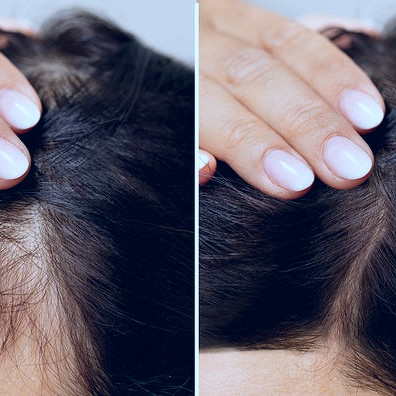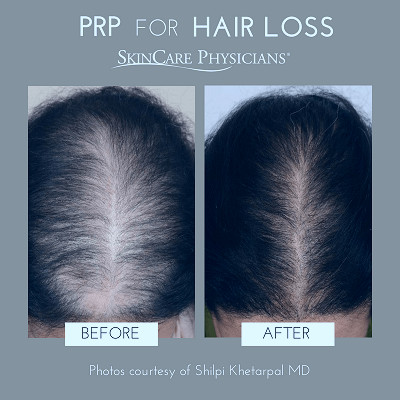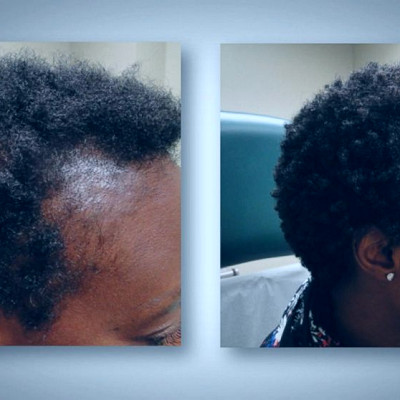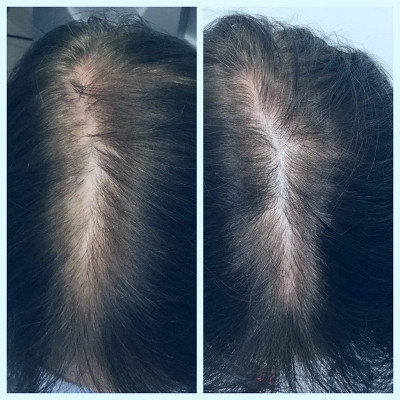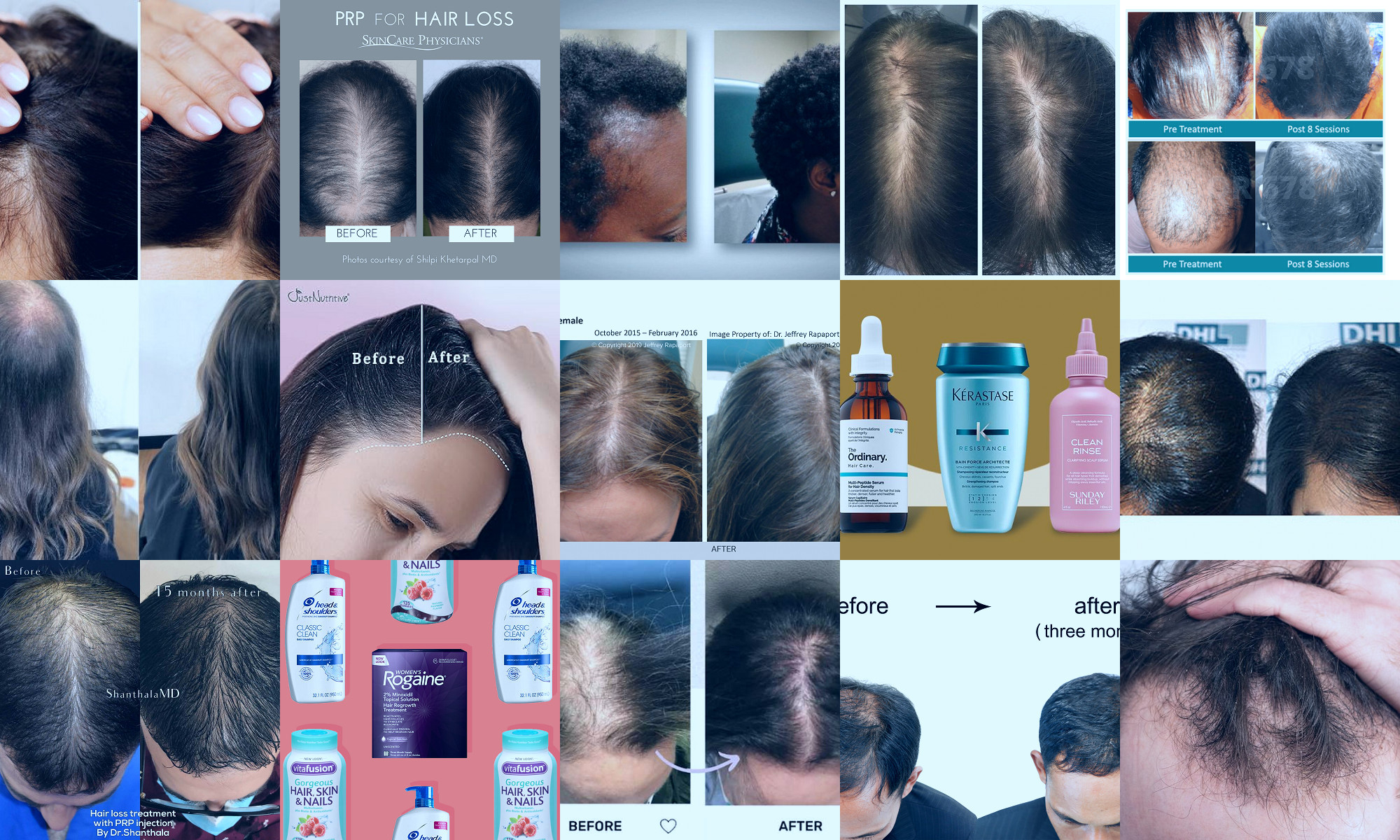 Jarlat Maletych/Shutterstock
Jarlat Maletych/Shutterstock
Features
Understanding Hair Loss
Hair loss, also known as alopecia, is a common concern for many people. It can happen as a result of heredity, hormonal changes, medical conditions or aging. It's important to understand that hair loss is a natural part of the hair's life cycle, but when it becomes excessive, it might indicate an underlying health issue.
Nutritional Supplements
Certain supplements such as Biotin, Vitamin D, Vitamin E, Iron, and Zinc have been shown to promote hair growth and reduce hair fall. They work by nourishing the scalp and hair follicles, promoting healthy hair growth.
Topical Treatments
Minoxidil, an over-the-counter solution, is one of the most popular topical treatments for hair loss. It works by prolonging the growth phase of hair follicles and stimulating hair regrowth.
Prescription Medications
Finasteride is a prescription medication used to treat male pattern baldness. It works by inhibiting the conversion of testosterone into DHT, the hormone responsible for hair thinning and baldness.
Laser Therapy
Low-level laser therapy is a non-invasive treatment option that uses light energy to stimulate hair growth. It's considered safe and effective for both men and women suffering from genetic hair loss.
Platelet-Rich Plasma (PRP) Therapy
PRP therapy involves injecting a patient's own platelets into the scalp to stimulate hair growth. The platelets release growth factors that promote cell regeneration and stimulate the hair follicles.
Essential Oils
Essential oils like lavender, rosemary, and peppermint have been shown to stimulate hair growth. They work by improving blood flow to the scalp and strengthening the roots of the hair.
Scalp Massage
Regular scalp massages can help stimulate blood flow to the hair follicles, promoting hair growth. They can also help reduce stress, which is a common cause of hair loss.
Healthy Diet
A diet rich in proteins, vitamins, and minerals can help promote healthy hair growth. Foods such as eggs, berries, spinach, and fatty fish are excellent for hair health.
Regular Exercise
Regular physical activity helps boost circulation, which can stimulate hair growth by providing nutrients to the hair follicles.
Limit Heat Styling
Excessive heat styling can damage hair and lead to breakage. It's important to limit the use of heat-styling tools and protect your hair from heat damage.
Avoid Tight Hairstyles
Tight hairstyles can cause traction alopecia, a type of hair loss caused by constant pulling on the hair. Opt for loose hairstyles to prevent unnecessary stress on your hair.
Stress Management
High-stress levels can lead to hair loss. Techniques such as meditation, yoga, and deep breathing can help manage stress and reduce hair loss.
Limit Chemical Treatments
Chemical treatments such as perms and color treatments can damage the hair and lead to hair loss. Try to limit your use of these treatments or opt for natural alternatives.
Hydration
Drinking plenty of water can help keep your hair hydrated from the inside out. Hydrated hair is less likely to become dry and brittle, which can lead to breakage and hair loss.
Regular Trims
Regular trims can help prevent split ends and breakage, promoting healthier hair growth.
Use a Gentle Shampoo
Harsh shampoos can strip the hair of its natural oils, leading to dryness and breakage. Opt for a gentle, sulfate-free shampoo to keep your hair healthy.
Get Regular Check-ups
Regular health check-ups can help detect any underlying conditions that might be causing hair loss. Early detection and treatment can help prevent further hair loss.
Sleep
Getting enough sleep is crucial for overall health, including hair health. During sleep, the body repairs and regenerates cells, including the cells in our hair follicles.
Consult a Dermatologist
If you're experiencing significant hair loss, it's important to consult a dermatologist. They can diagnose the cause of your hair loss and recommend appropriate treatment options.
Interesting notes and facts
1. Natural Solutions: Mother Nature has provided us with many remedies that can promote hair growth and reduce hair loss. For instance, massaging the scalp with essential oils like lavender, rosemary, and thyme can stimulate hair follicles. The antioxidant properties of green tea and aloe vera can also help rejuvenate hair follicles.2. Medicinal Approaches: Science has given us medications like Minoxidil (Rogaine) and Finasteride (Propecia) that can slow hair loss and even help regenerate hair growth. Always consult a healthcare provider before beginning any medical treatment.
3. Healthy Diet: Nutrition plays a significant role in hair health. Eating a diet rich in proteins, vitamins, and minerals can significantly improve hair growth. Foods high in vitamins A, B, C, D, iron, selenium, and zinc are particularly beneficial.
4. Scalp Massage: Regular scalp massage not only feels good but can also stimulate blood circulation to the scalp and hair follicles, promoting hair growth. You can incorporate essential oils into your massage for added benefits.
5. Yoga and Exercise: Regular physical activity can help nourish the hair follicles by increasing blood circulation throughout the body. Certain yoga poses, such as the downward-facing dog, can further boost blood flow to the scalp.
6. Laser Therapy: Low-level laser therapy is a safe form of light/heat treatment under investigation for a variety of health indications. It is being used to treat the genetic forms of hair loss common in men and women, androgenetic alopecia or pattern balding.
7. Platelet-Rich Plasma (PRP): PRP therapy involves injection of the patient's own platelets and fibrin for the cosmetic treatment of hair loss. It works by stimulating the growth of hair follicles, leading to hair growth.
8. Hair Transplant: Hair transplant surgeries, such as follicular unit transplantation (FUT) and follicular unit extraction (FUE), can help restore hair by transplanting new follicles into balding or thinning areas. These treatments are more invasive and expensive, but offer lasting results.
9. Stress Management: High stress levels can lead to hair loss. Incorporating stress management techniques like meditation, deep breathing, and yoga into your daily routine can help reduce stress and improve overall health, including the health of your hair.
10. Avoid Damaging Hair: Avoiding heat treatments, chemical hair treatments, harsh hairstyles, and excessive brushing can also help prevent hair damage and hair loss. Always handle your hair gently, and use products that are gentle and suited to your hair type.
Vocabulary
- Alopecia – A medical term for hair loss.
- Androgenetic alopecia – A common form of hair loss in both men and women.
- Telogen effluvium – A temporary hair thinning over the scalp that occurs because of changes in the growth cycle of hair.
- Anagen effluvium – A rapid hair loss resulting from medical treatment, such as chemotherapy.
- Traction alopecia – Hair loss due to pulling hair into tight hairstyles.
- Minoxidil – An over-the-counter medication used for hair loss treatment.
- Finasteride – A prescription medication used in men to treat hair loss.
- Corticosteroids – Medications used to treat hair loss caused by inflammation.
- PRP therapy – A hair loss treatment that involves injecting platelet-rich plasma into the scalp.
- Laser therapy – A treatment that uses light to stimulate hair growth.
- Hair transplant – A surgical procedure to treat hair loss.
- Scalp reduction – A surgical treatment that involves removing parts of the scalp that are experiencing hair loss.
- DHT – Dihydrotestosterone, a hormone that can contribute to hair loss.
- Biotin – A vitamin that may support hair health.
- Keratin – A protein that makes up hair, and can be used in treatments for hair health.
- Dermal papilla cells – Cells at the base of hair follicles, crucial for hair growth.
- Hair follicle – The part of the skin which grows hair by packing old cells together.
- Sebum – An oily substance produced by the body that can contribute to hair health or hair loss.
- Hair cycle – The cycle of growth, rest, and shedding that hair undergoes.
- Hair shaft – The part of the hair that is visible above the skin.
- Scalp – The skin that covers the top of the head, where hair grows.
- Hair matrix – The area where hair is produced in the hair follicle.
- Hair cloning – An experimental hair loss treatment.
- Hair density – The number of individual hairs per square inch on the head.
- Hair texture – The natural shape or pattern of an individual's hair.
- Trichologist – A specialist in the science of hair and scalp.
- Hair analysis – A test that uses hair samples to detect specific health issues.
- Hair nutritional supplements – Vitamins and minerals taken to improve hair health.
- Rogaine – A brand name for minoxidil.
- Propecia – A brand name for finasteride.
- Hair restoration – The medical and surgical techniques used to treat hair loss.
- Trichology – The scientific study of the hair and scalp.
- Scalp micropigmentation – A cosmetic procedure that creates the appearance of fuller hair.
- Hair weaving – A method of adding hair extensions to existing hair.
- Scalp cooling – A treatment used to prevent hair loss during chemotherapy.
- Hair regrowth – The process of hair growing back after hair loss.
- Scalp massage – A technique used to promote hair growth by stimulating the scalp.
- Hair thinning – A reduction in the thickness or quantity of hair.
- Hair loss prevention – Methods used to prevent or slow down hair loss.
- Hair growth cycle – The process of hair growing, resting, and falling out.
- Hair breakage – When hair becomes damaged and breaks off shorter than the normal growth cycle.
- Hair strengthening – Treatments that help to make hair stronger and less likely to break.
- Hair hydration – The process of adding moisture to hair.
- Scalp health – The condition of the scalp, which can affect hair growth and loss.
- Hair serum – A product applied to the hair to give it shine and reduce frizziness.
- Hair elasticity – The ability of hair to stretch and return to its original length without breaking.
- Hair porosity – The ability of hair to absorb and hold moisture.
- Hair loss causes – Factors that cause hair to fall out, which can be genetic, hormonal, nutritional, or environmental.
- Hair rejuvenation – The process of making the hair look and feel younger, healthier, and more vibrant.
- Hair resilience – The ability of hair to withstand damage.
